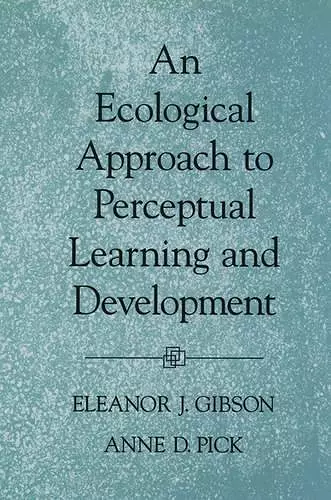An Ecological Approach to Perceptual Learning and Development
Format:Paperback
Publisher:Oxford University Press Inc
Published:29th May '03
Currently unavailable, and unfortunately no date known when it will be back

Gibson and Pick argue that infants are active learners who perceptually engage their environments and extract information from them. This ecological approach to development - defined as a 'theory about perceiving by active creatures who look and listen and move around' - was spearheaded by the Gibson and Gibson in the 1950s. This book, written by one of the most eminent experimental psychologists of the 20th Century, is the summary and capstone of a long and fruitful experimental tradition.
This is a beautifully written book, and a most welcome addition to the field of perceptual development, indeed to the whole discipline of child development. For years I have taught a graduate course in perceptual development and never had a text that I felt I could assign in its entirety. Now I do, because this book brings a lucid introduction that is crystal clear in its explication of the complex ideas encompassed by this field. The scholarship is deep, accurate, and thorough. * Rachel K. Clifton, University of Massachusetts, Amherst *
ISBN: 9780195165494
Dimensions: 237mm x 156mm x 17mm
Weight: 367g
248 pages